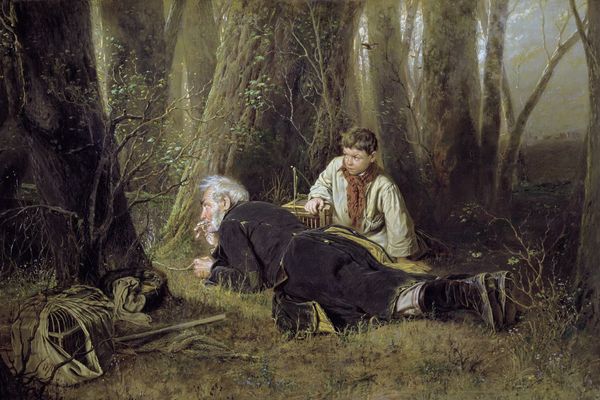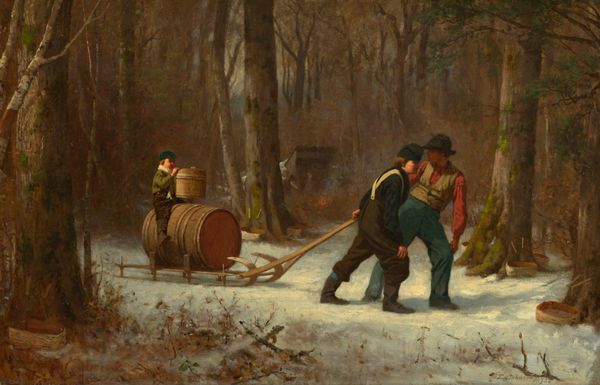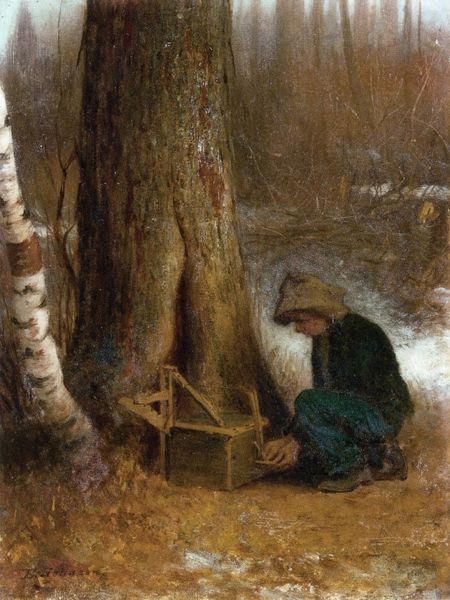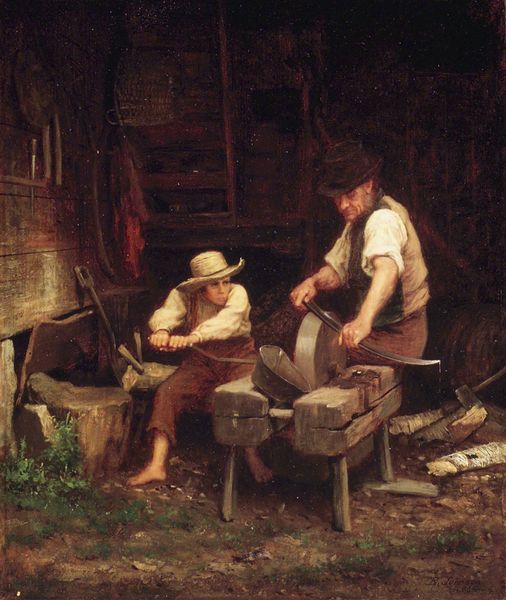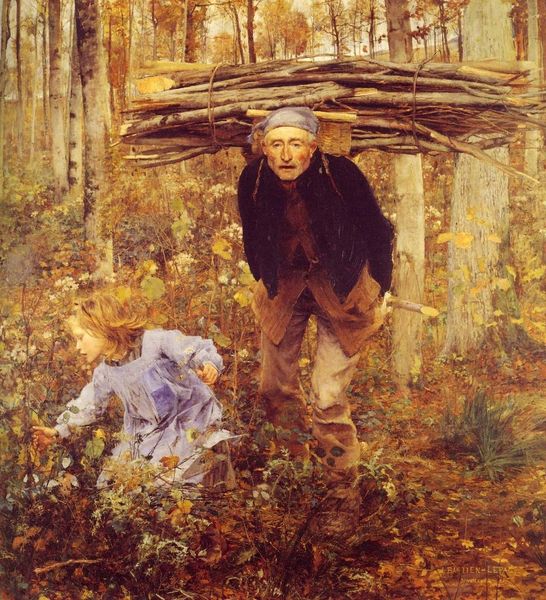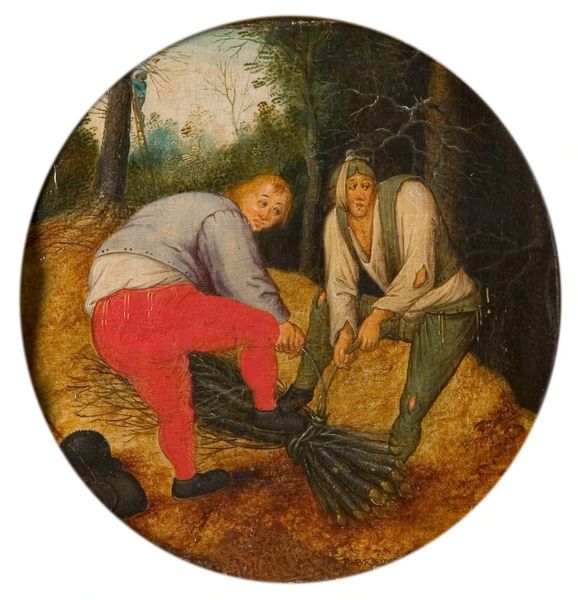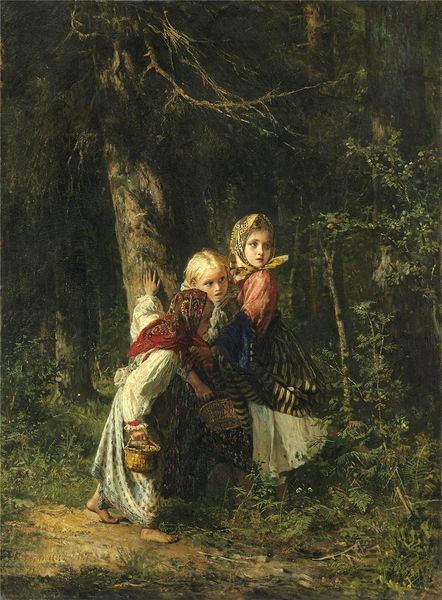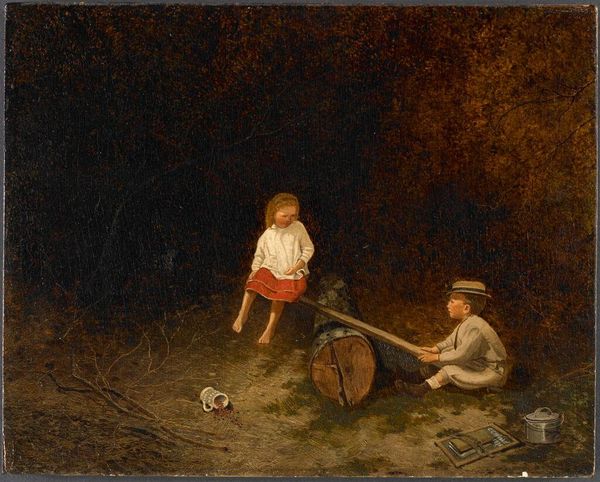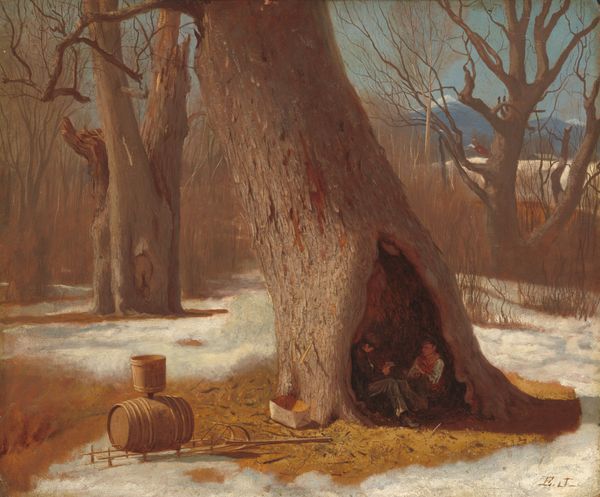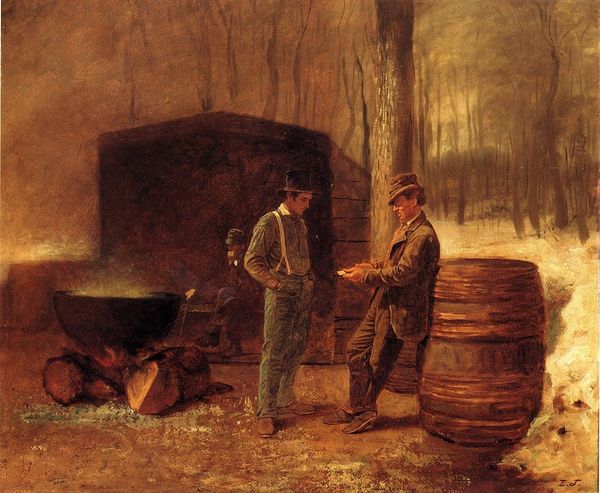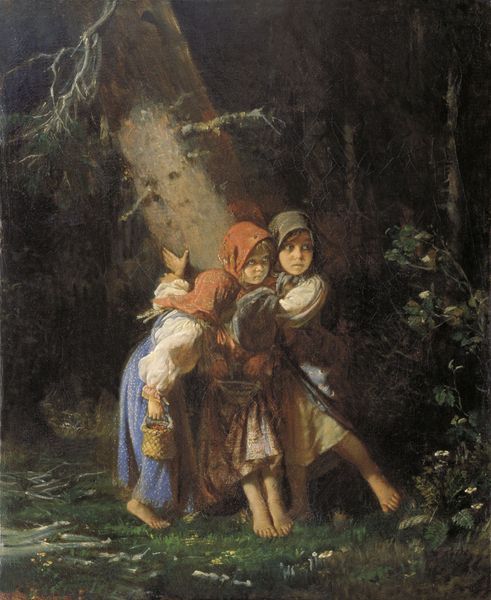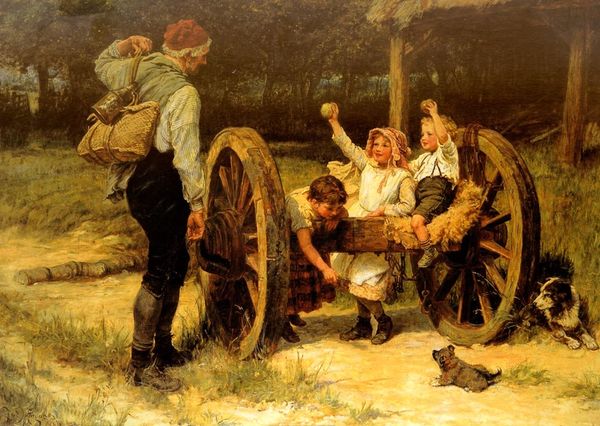
Copyright: Public domain
Curator: Eastman Johnson's oil on canvas from 1866, "The Eavesdropper," presents a secretive scene amidst a vividly painted landscape. Editor: It feels intensely private, even secretive, doesn’t it? Almost like stumbling upon a hidden world, a little theater of children set apart from the adult world. Curator: Precisely. The work invites you in. Notice how the three figures huddle around what appears to be a large barrel, while a child with greenery lurks curiously beside them. It is intimate, isn't it? Editor: The barrel is a clever device. For centuries the barrel represents nourishment, but this almost seems to subvert the iconographic purpose, a shelter not for food storage but perhaps something darker like a temporary shelter to get away from some abuse or something that needs concealing from an unknown perpetrator. The boys also seem to have been pushed down in stature. I almost didn’t realize the girl was standing to the side until just now. Curator: Good point. While there are undertones of something unsettling. it’s painted with such gentleness. Johnson has these beautiful depictions of children and the woods, like they become one. He certainly saw something uniquely and poetically American. Editor: Oh, without a doubt! There is so much here. I also appreciate the narrative that you are trying to figure out what these children are doing or going through together. The barrel becomes this silent character to bear the brunt of whatever story Eastman is trying to say here. What you can’t see feels even more vital to me as I think about that missing piece and the story around this barrel and all of them. Curator: What I admire most is its almost theatrical nature. Every element, from the glow of the small fire to the girl's expression, tells a small story. I think what I appreciate most, especially in American Romanticism, is a constant effort to reflect on the present. It serves as a constant and very potent reminder of a moment in time. It's an artifact of American childhood, painted with skill and deep emotion. Editor: Yes, exactly. A memory brought to life. For all of the symbolic meaning, I see an intimate and subtle tale unfolding. That girl to the side isn't innocent but part of some strange compact and mystery in what is meant to be childhood. Thank you!
Comments
No comments
Be the first to comment and join the conversation on the ultimate creative platform.
